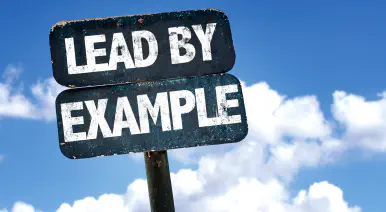Employee Engagement: The Generational Value Gap
Engaged employees work more efficiently and produce higher-quality work. There are many employee engagement elixirs that claim to cure your unengaged employees. However, one key concept foils any one-size-fits-all solution: Your employees don’t all hold the same workplace value set. It’s important to look at your employees from multiple perspectives, especially generational differences, rather than viewing them as simple cogs that complete a machine.
Some workplace values become less important as life moves from generation to generation while new ideas and concepts can suddenly become the most important aspect of work life. Your workforce is likely comprised of several different generations, but your corporate culture may only be appealing to one of them. This is the downfall of many employee engagement plans.
For example, “Millennials” (18 to 29 years old) are beginning to make up more and more of your workforce – or potential workforce. These are the bright young workers who will propel your company into the future. 75% of them have a social media profile and are not only open to social recognition, but encourage it. In the middle of the spectrum, you have Generation X (30 to 45 years old). This generation is technically inclined, but not as engaged with social media channels as Millennials. So, if you craft a social recognition plan in an effort to boost employee engagement, and a majority of your employees are Gen Xers, it may fall on deaf ears for most of your staff.
You may also have Baby Boomers (46 to 64 Years old) on your team, the oldest generation of current employees. The biggest workplace characteristic of Boomers is their desire to work. Whereas a Generation Xer might relish a day off, a Baby Boomer may view a day off as punishment for poor work, or an opportunity for someone to take their job.
It’s part of your job as a leader to evaluate employee engagement plans and decide which ideas carry the maximum impact for a particular employee, generation, and your entire workforce. Culture changes rapidly, and workplace values are constantly adapting. This makes it hard, if not impossible, to create a timeless, perpetual employee engagement plan, and that is the downfall of many in-house engagement plans. It’s important to be able to recognize the cultural norms and shifts on an employee engagement level and adapt your plans accordingly over time.
Having employees from different generations is a great position to be in because your employees have unique perspectives. Make sure your staff understands generational perspectives. Thoroughly researching the workplace values of each generation within your company using only internal resources simply takes too long. However, this task is easily accomplished by deploying an employee engagement survey from NBRI. Generational metrics are then benchmarked against data from other organizations in your industry giving you a true understanding of what your employees want and how you stack up in the workplace. Your employee engagement plan just became a lot simpler, a lot more accurate, and customizable to the various generations working for your company.




























 By submitting this form you agree to our
By submitting this form you agree to our